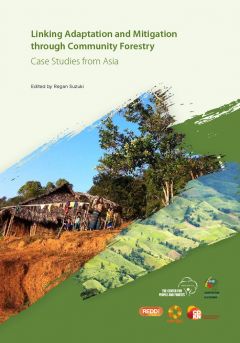Resource information
"The main argument for community forestry, in the context of climate change, is that it responds to multiple interests. Forests, and in particular community forestry, represent a bundle of assets and benefits. They serve as a safety net in times of hardship and support critical ecosystems required for well-being. The cases point out that while the contributions of community forestry to mitigation are well-recognized, in the case of adaptation, community forestry is equally well placed to support adaptive capacity, but this is not automatic." - Regan Suzuki
Given the role that forests play in mitigation and adaptation to climate change, there are potential synergies between REDD+ and the ability of populations to adapt to the impacts of climate change. As many countries in the region develop their national adaptation strategies, explicit incorporation of forests within these plans needs to be ensured. Conversely, mitigation activities such as REDD+ rarely include explicit references to adaptation or the development of adaptive capacity (FAO, 2012). Additionally, failure to consider mitigation and adaptation in the context of forests and forest based communities may result in an undermining of sustainable forestry practices and a loss of rights and livelihoods among vulnerable communities.
Exploring the role of forests for mitigation, adaptation, and livelihoods can identify potential synergies and trade-offs.These case studies are based on local experiences in Cambodia, Indonesia, Nepal, Thailand, and Vietnam in an attempt to explore how community forestry may contribute to adaptation and mitigation goals. They are exploratory and descriptive in nature and although not purporting to be representative of the region, they provide a foundation for a better understanding of these relationships.
The case studies for the five focus countries are included with this publication.


